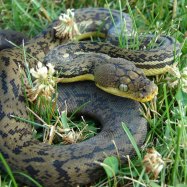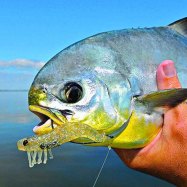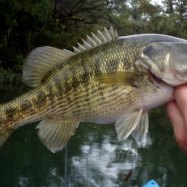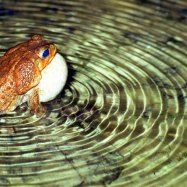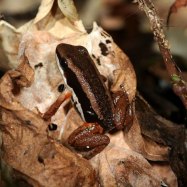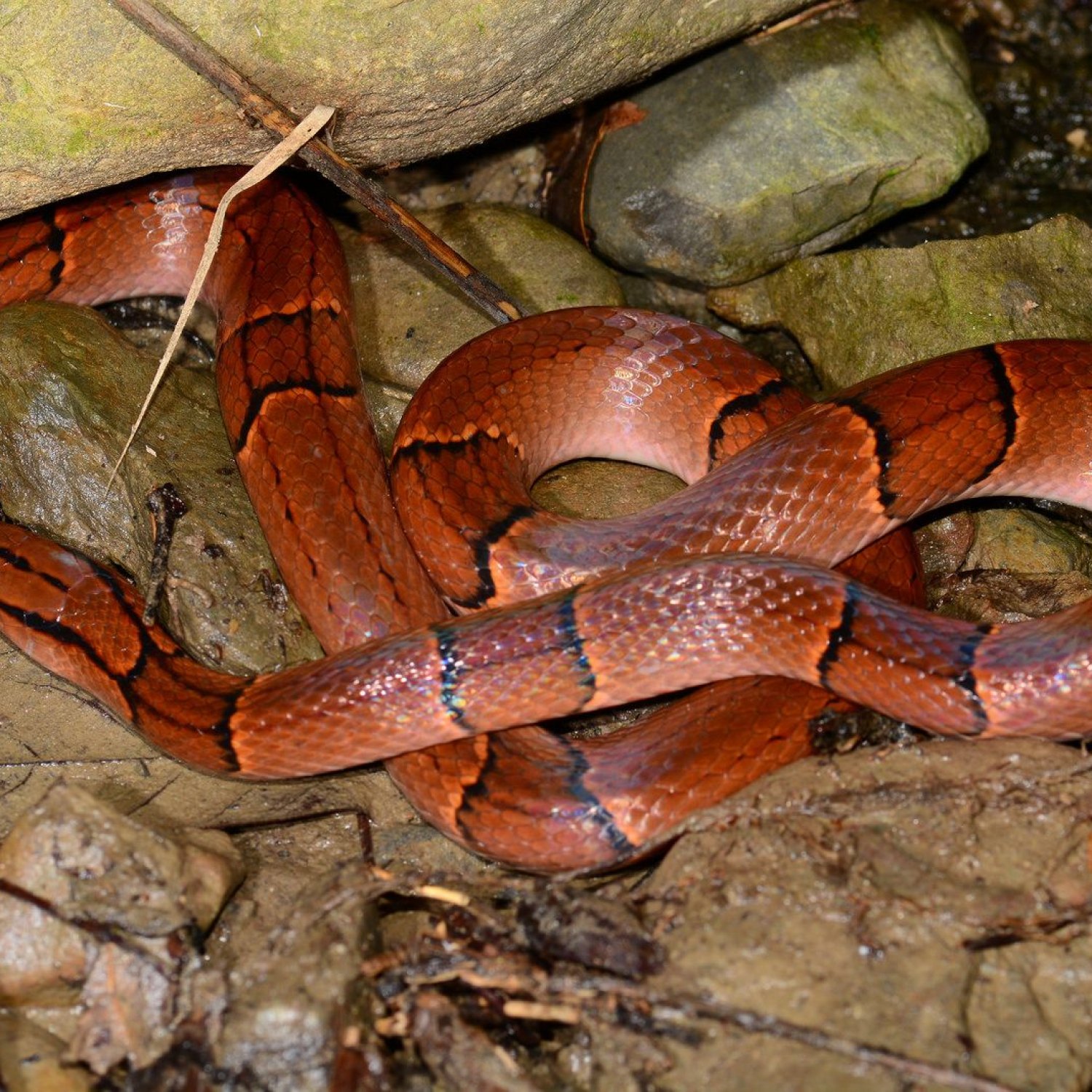
Beauty Rat Snake
3 to 6 feet
The Beauty Rat Snake, found in Southeast Asia, is a stunning creature with a slender and elongated body. Growing up to 6 feet in length, it is categorized as a B animal and is a part of the Colubridae family. Often found in rainforests and agricultural areas, this serpent is known for its striking beauty and agility. Learn more about this fascinating species and its natural habitat. #BeautyRatSnake #SoutheastAsia #Rainforests #Colubridae
Animal Details Summary:
Common Name: Beauty Rat Snake
Kingdom: Animalia
Habitat: Forests, grasslands, and agricultural areas
The Beautiful Beauty Rat Snake: An Elusive Serpent of Southeast Asia
Have you ever come across a snake that not only looks like a work of art but also moves with such grace and elegance that it leaves you mesmerized? If you have, then chances are that you have encountered the Beauty Rat Snake, also known as Elaphe taeniura.Highly desired by reptile enthusiasts, the Beauty Rat Snake is a species of non-venomous snake native to Southeast Asia, particularly Thailand. Its striking appearance and elusive nature have made it a popular choice for those looking to add a unique snake to their collection. But there's more to this mesmerizing serpent than just its appearance Beauty Rat Snake. In this article, we will delve deeper into the world of the Beauty Rat Snake - its habitat, physical characteristics, feeding habits, and more.
Classification: A Part of the Reptilian Family
Before we dive into the world of the Beauty Rat Snake, let's first understand its place in the animal kingdom. The scientific name for this species is Elaphe taeniura, and it belongs to the Kingdom Animalia, the Phylum Chordata, and the Class Reptilia. Within this Class, the Beauty Rat Snake belongs to the Order Squamata and the Family Colubridae.This classification is shared with other snakes, such as the Corn Snake and the Garter Snake, and gives us an insight into the characteristics that the Beauty Rat Snake shares with its reptile counterparts.
Where Do They Live? Habitat and Geographic Distribution
The Beauty Rat Snake can be found in various habitats, including forests, grasslands, and agricultural areas. They are most commonly found in the rainforests and agricultural areas of Southeast Asia, particularly Thailand. These areas provide the perfect environment for the snake to thrive, with an abundance of prey and shelter.Their elusive nature and skill at blending into their surroundings make them difficult to spot in the wild Blacktip Reef Shark. This, combined with the fact that they are often found in remote regions, makes them a relatively unknown species in the world of reptiles.
Appearance and Physical Characteristics
The Beauty Rat Snake is known for its varying and beautiful coloration, making it stand out from other snakes in its family. While its name might imply a rat-like appearance, this species is anything but. Its body is slender and elongated, with a pointed head and a slightly upturned snout.The scales of the Beauty Rat Snake are smooth and glossy, giving it a sleek appearance. The coloration of this species varies significantly, but the most common colors are green, with yellow or white stripes running along its body.
The variation in coloration is not only limited to its body but also extends to its head and tail, making each snake unique in its own way. These colors and patterns help the snake to blend into its surroundings, making it a master of camouflage and a tough species to spot.
A Carnivorous Diet
Just like other snakes, the Beauty Rat Snake is carnivorous and feeds mainly on rodents, birds, lizards, and other small reptiles. They have been known to hunt during both day and night, using their excellent sense of smell and heat sensors to locate their prey.One interesting fact about the Beauty Rat Snake is that it is not immune to the venom of other snakes. This means that it must be cautious when hunting venomous prey, such as other snakes, to avoid getting bitten and poisoned.
A Not-So-Perfect Predator
While the Beauty Rat Snake may seem like a perfect predator with its striking appearance and hunting abilities, it does have its fair share of natural predators. Birds of prey, such as hawks and eagles, snakes, and even other carnivorous animals, pose a threat to this species.However, the Beauty Rat Snake has developed a few ways to protect itself from these predators, such as its ability to camouflage and swift movements. It also has a unique defense mechanism known as musking, where it emits a foul-smelling liquid from its cloaca to deter predators.
Breeding and Reproduction
The mating season for the Beauty Rat Snake occurs between the months of April and May. During this time, the males will compete for the females by engaging in combat known as "head butting." Once the female has chosen her mate, they will engage in a lengthy courtship process.After mating, the female will lay a clutch of anywhere between 8 to 18 eggs in a safe location, such as a decaying log or a nest of leaves. The eggs will take approximately two to three months to hatch, and the newborn snakes will be independent from the moment they emerge from the egg.
The Role of the Beauty Rat Snake in its Ecosystem
The Beauty Rat Snake plays a vital role in its ecosystem, helping to maintain the balance of prey and predator populations. As an apex predator, it helps to keep the populations of rodents and other small animals in check, preventing an overabundance of these creatures.Additionally, the presence of the Beauty Rat Snake also signals a healthy ecosystem. Being an elusive species, their presence indicates that the habitat is abundant in prey, providing a future for not only this species but also other animals within its food chain.
Threats to the Species and Conservation Efforts
Like many other species, the Beauty Rat Snake faces numerous threats to its survival. Habitat loss due to deforestation and land development is one of the biggest threats to this species. Additionally, they are often killed by humans, either accidentally or intentionally, due to the fear of snakes.In an effort to protect this species, conservation efforts have been put in place, such as the establishment of protected areas and educating local communities on the importance of this species in their ecosystem. However, more needs to be done to ensure the long-term survival of the Beauty Rat Snake in the wild.
The Beauty Rat Snake as a Pet
As mentioned earlier, the Beauty Rat Snake is a highly coveted species among reptile enthusiasts due to its striking appearance and elusiveness. However, keeping them as pets requires a great deal of knowledge, experience, and dedication.If you are considering adding a Beauty Rat Snake to your collection, it is essential to research and understand their needs and care requirements to ensure their well-being. Additionally, it is vital to obtain them from a reputable breeder or a rescue organization rather than taking them from the wild.
In Conclusion
In the world of snakes, the Beauty Rat Snake stands out as a mesmerizing species, both in appearance and behavior. Its striking coloration and elusive nature make it a highly sought-after species among reptile enthusiasts. However, more importantly, it plays a vital role in maintaining its ecosystem's balance and deserves to be protected and appreciated for its unique characteristics and its contribution to nature.

Beauty Rat Snake
Animal Details Beauty Rat Snake - Scientific Name: Elaphe taeniura
- Category: Animals B
- Scientific Name: Elaphe taeniura
- Common Name: Beauty Rat Snake
- Kingdom: Animalia
- Phylum: Chordata
- Class: Reptilia
- Order: Squamata
- Family: Colubridae
- Habitat: Forests, grasslands, and agricultural areas
- Feeding Method: Carnivorous
- Geographical Distribution: Southeast Asia
- Country of Origin: Thailand
- Location: Rainforests and agricultural areas of Southeast Asia
- Animal Coloration: Variable, but commonly green with yellow or white stripes
- Body Shape: Slender and elongated
- Length: 3 to 6 feet
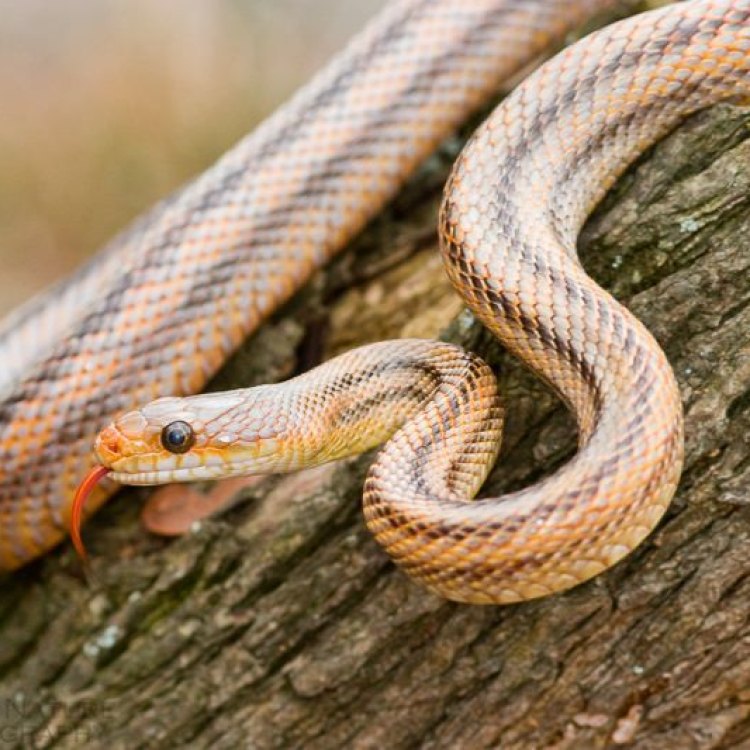
Beauty Rat Snake
- Adult Size: 4 to 6 feet
- Average Lifespan: 12 to 20 years
- Reproduction: Oviparous
- Reproductive Behavior: Mating occurs in spring or summer, with females laying 6 to 20 eggs in secluded locations
- Sound or Call: Hissing sound when alarmed
- Migration Pattern: Non-migratory
- Social Groups: Solitary
- Behavior: Nocturnal and arboreal
- Threats: Habitat loss and illegal pet trade
- Conservation Status: Least Concern
- Impact on Ecosystem: Helps control rodent populations
- Human Use: Popular in the pet trade
- Distinctive Features: Brightly colored scales and slender body
- Interesting Facts: The Beauty Rat Snake is known for its ability to climb trees and catch birds in mid-flight
- Predator: Birds of prey, large snakes, and mammals
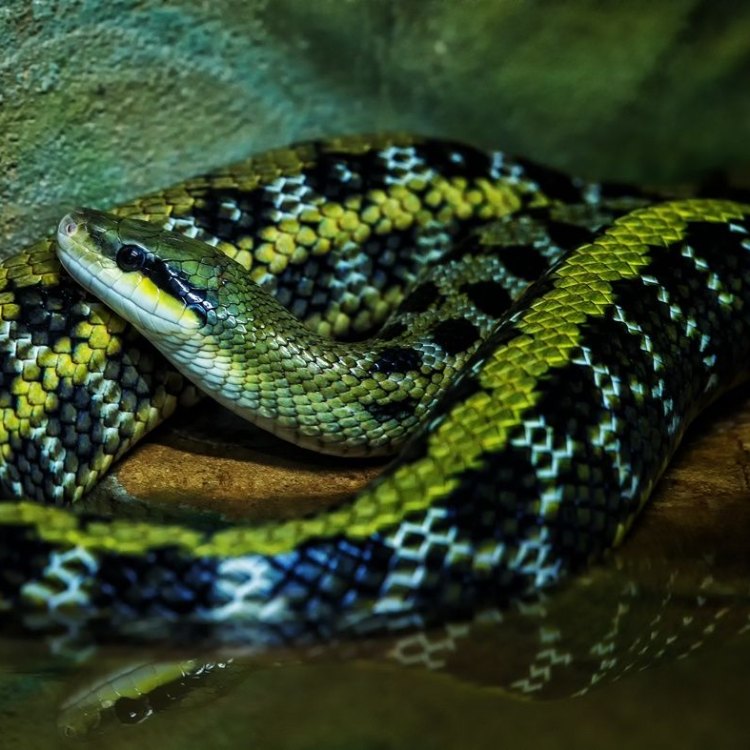
Elaphe taeniura
The Beauty Rat Snake: A Fascinating Species with Beautiful Features
When you think of a snake, what comes to mind? Perhaps it's a scary, slithering creature with a menacing hiss. But not all snakes fit this stereotype. In fact, some snakes have such unique and gorgeous features that they are often sought after as pets. One such snake is the Beauty Rat Snake, a fascinating species that has captivated the hearts of many reptile enthusiasts PeaceOfAnimals.Com. From its bright and colorful scales to its intriguing behavior, there's no denying the charm and allure of this beautiful snake.The Beauty Rat Snake, also known as Elaphe taeniura, belongs to the subfamily Colubrinae and is a member of the colubrid family. It is native to Southeast Asia, specifically in Thailand, Malaysia, and Indonesia. This snake species is widely distributed and can be found in various habitats, including forests, grasslands, and cultivated areas.
One of the most striking features of the Beauty Rat Snake is its size. As an adult, it can grow up to 4 to 6 feet in length. This makes it a relatively small snake compared to other species, making it the perfect size for a pet. However, its small size doesn't take away from its beauty and uniqueness.
The average lifespan of a Beauty Rat Snake is 12 to 20 years in captivity Bombay. In the wild, their lifespan may be slightly shorter due to predators and other environmental factors. But with proper care and habitat, these snakes can live a long and healthy life in captivity.
Like most snakes, the Beauty Rat Snake is an oviparous species, meaning it lays eggs to reproduce. Mating occurs in the spring or summer, and females can lay 6 to 20 eggs at a time. These eggs are usually laid in secluded locations such as under rocks or in decaying logs. The incubation period lasts for about 60 to 70 days, after which the hatchlings emerge from their eggs.
When it comes to reproductive behavior, the males are known for their elaborate courtship rituals. They will rub against the female's body, flick their tongue, and sometimes engage in physical combat with other males. This behavior is fascinating to witness and adds to the overall allure of this species.
The Beauty Rat Snake is primarily a solitary creature. It leads a solitary life, and its hunting and mating patterns are also solitary. However, during the breeding season, multiple males may pursue a female, leading to brief social interactions. Otherwise, these snakes prefer to live and hunt alone.
As a nocturnal and arboreal species, the Beauty Rat Snake is most active at night and spends most of its time in trees. This behavior is quite different from other snake species that are primarily ground-dwellers. Their slender and agile bodies allow them to climb trees with ease, making them one of the few snake species capable of catching birds in mid-flight.
When threatened or agitated, the Beauty Rat Snake emits a hissing sound as a warning. This hissing sound is meant to deter predators and is a common behavior among many snake species. While it may sound intimidating, the Beauty Rat Snake is non-venomous and poses no serious threat to humans.
Speaking of threats, the Beauty Rat Snake faces several risks in the wild. Habitat loss due to deforestation and illegal pet trade are two significant threats to this species. These snakes are often taken from their natural habitats and sold as exotic pets, leading to a decline in their populations. As a result, the International Union for Conservation of Nature (IUCN) has listed the Beauty Rat Snake as a species of Least Concern. However, continued efforts are needed to ensure their populations remain stable in the wild.
But despite these threats, the Beauty Rat Snake plays a crucial role in its ecosystem. As a predator, it helps control rodent populations, which can otherwise have a significant impact on agricultural and human health. By keeping the rodent populations in check, these snakes help maintain balance and biodiversity in their habitats.
The Beauty Rat Snake's distinctive features make it stand out from other snake species. Its scales are brightly colored, with shades of yellow, orange, and red, making it a sight to behold. These colors not only add to its beauty but also serve as a form of camouflage, helping it blend into its surroundings. Its slender body also makes it an efficient hunter, allowing it to navigate through tight spaces and strike at its prey with precision.
This species also has a fascinating history when it comes to its human use. While they have been admired and respected in their natural habitats, they have also been a popular choice in the pet trade. Their unique and attractive appearance, coupled with their easy-to-handle nature, makes them a highly sought-after snake in the reptile pet community. However, it is essential to note that owning a Beauty Rat Snake requires a significant level of commitment and expertise. Proper care and handling are crucial to their well-being and longevity in captivity.
In conclusion, the Beauty Rat Snake is a fascinating and beautiful species with many unique features and behaviors. From its brightly colored scales to its nocturnal and arboreal lifestyle, this snake is truly one of a kind. While it may face threats in the wild, continued efforts to conserve and protect its habitat will ensure its survival for future generations to admire and appreciate. Whether as a pet or in its natural habitat, the Beauty Rat Snake continues to captivate and intrigue all those who come across it.
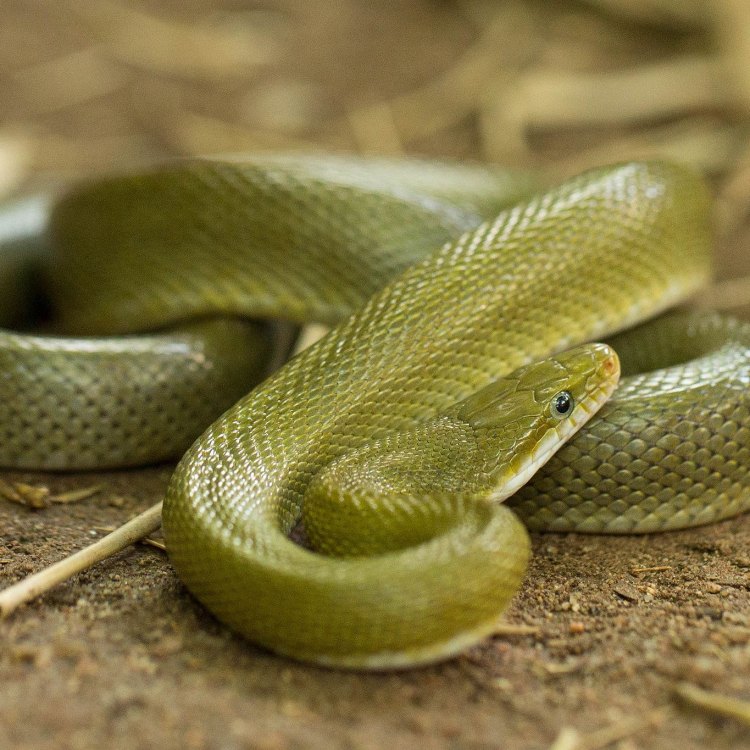
The Beautiful Beauty Rat Snake: An Elusive Serpent of Southeast Asia
Disclaimer: The content provided is for informational purposes only. We cannot guarantee the accuracy of the information on this page 100%. All information provided here may change without prior notice.


